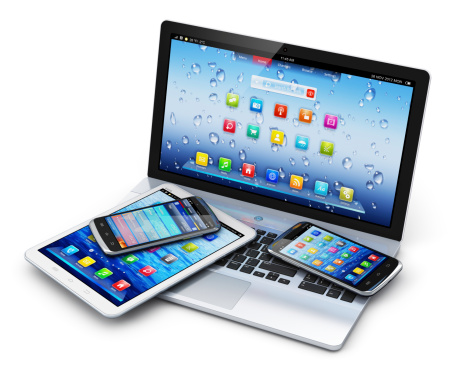 A recent Economist blog post entitled, “Google and Android: They have a plan” compelled me to add it as a bookmark, so that at some point in the future, I can compare the status of Google’s advancement on tracking Internet-connected devices and website content, otherwise known as the Internet of Things (IOT) coined by Kevin Ashton. In addition to the statistics Google unveiled at its recent Android developer conference, here are a few more telling facts from the Economist that shed light on our personal connection to big data:
A recent Economist blog post entitled, “Google and Android: They have a plan” compelled me to add it as a bookmark, so that at some point in the future, I can compare the status of Google’s advancement on tracking Internet-connected devices and website content, otherwise known as the Internet of Things (IOT) coined by Kevin Ashton. In addition to the statistics Google unveiled at its recent Android developer conference, here are a few more telling facts from the Economist that shed light on our personal connection to big data:
- One billion people worldwide now own an Android device
- Android users send approximately 20 billion text messages a day
- Users take 93 million “selfie” pictures a day
More importantly, for developers, are the innovative upgrades and additions to the Android operating system that will be rolled out over the next year. Android L offers greater synchronization across multiple devices while Android Wear focuses on wearable computing devices such as smart watches. Android One provides a more efficient system for developing countries’ smartphones and Android Auto delivers seamless connection of the Internet and email to your car’s computer system.
Android TV is another future system that can be bundled with new smart televisions that will enable users to stream music and videos from their smartphones and tablets to TVs. Google recently purchased NEST, a manufacturer of smart thermostats connected to the Internet. Shortly after that purchase, NEST acquired Dropcam, a manufacturer of Wi-Fi enabled security cameras that work in the home. Both of these acquisitions are purported to be the foundation for a home operating system that will provide residents with lower energy costs and better home security—not to mention additional data for Google to learn about the daily habits of families.
My recent book review of The Second Machine Age cited a fact that global computing power will double over the next 24 months, but will increase 1,000 times over the next 24 years. Smart devices such as thermostats, security cameras, smartphones, tablets, cars, and fitness monitors are generating data that wasn’t available just a few years ago. Harnessing that data for improvements in quality of life, product innovation, or understanding people’s lifestyles and habits will require additional computational power as well as analytical tools and analysts to evaluate the data. More and more, it will be difficult to “drop off the grid” as some people do now to avoid having anyone track their location and activities. For better or worse, the era of the Internet of Things is here and we should be prepared for how it may change our lives professionally and personally.
Follow Dr. Wally Boston on Twitter.











